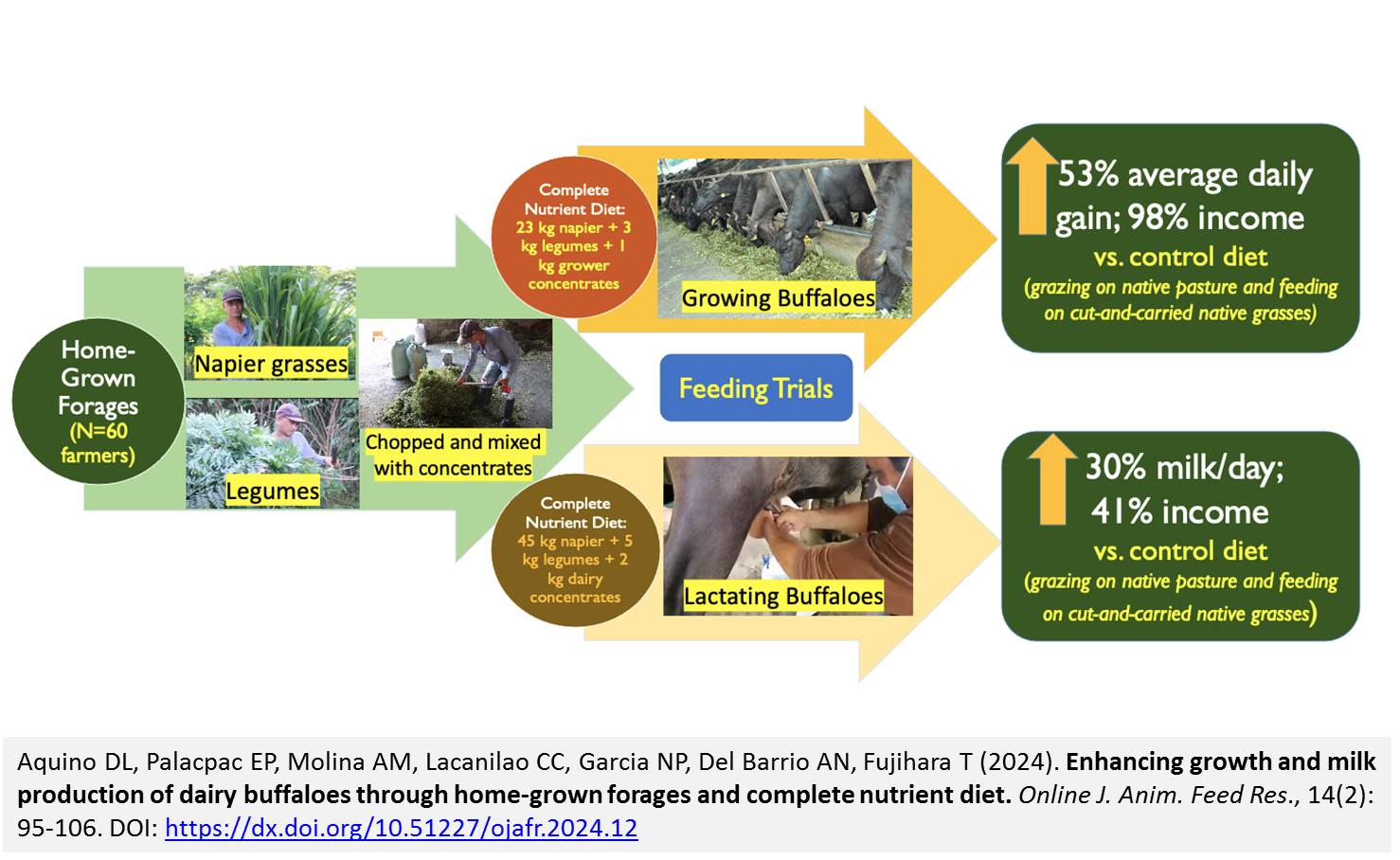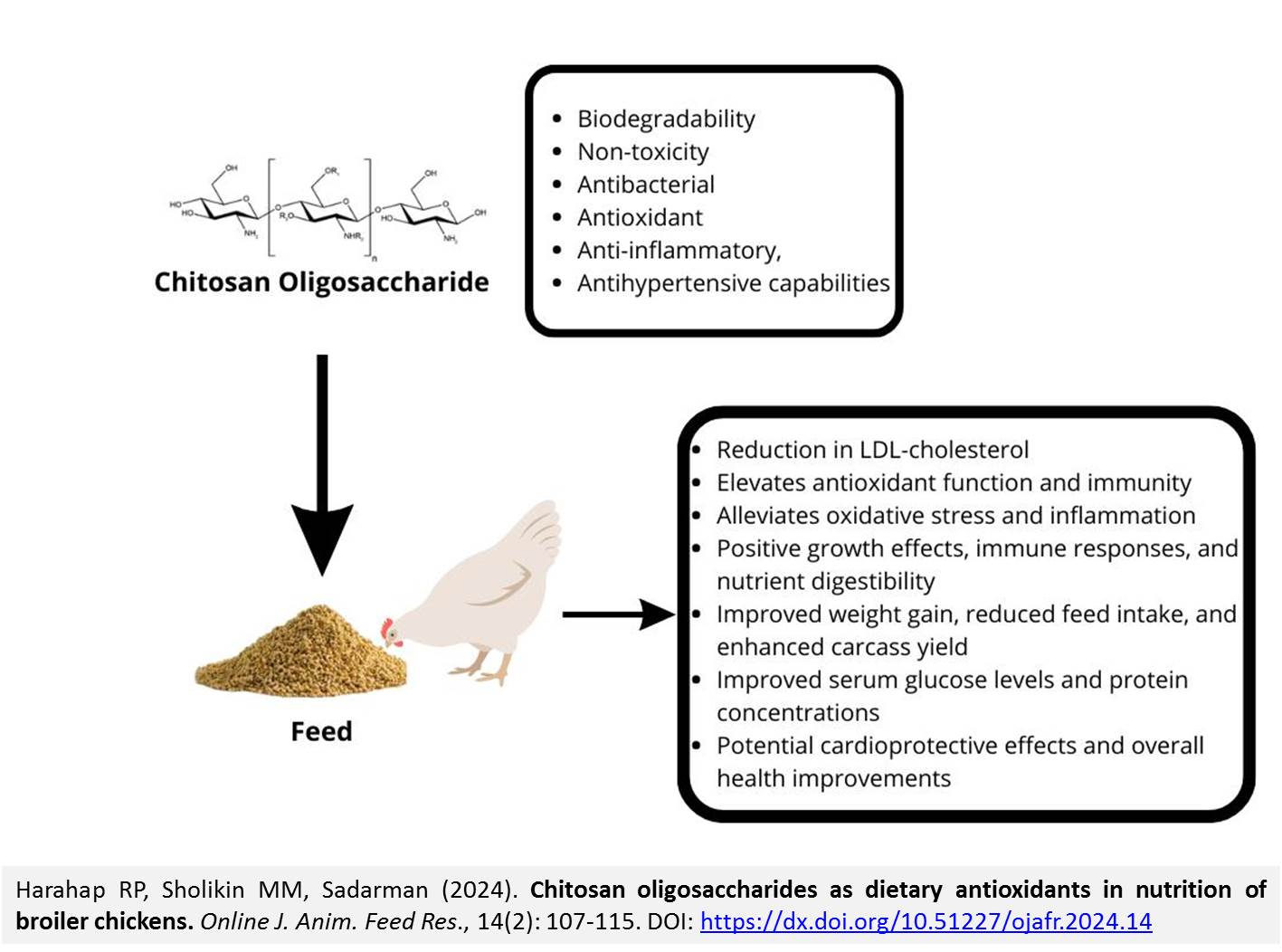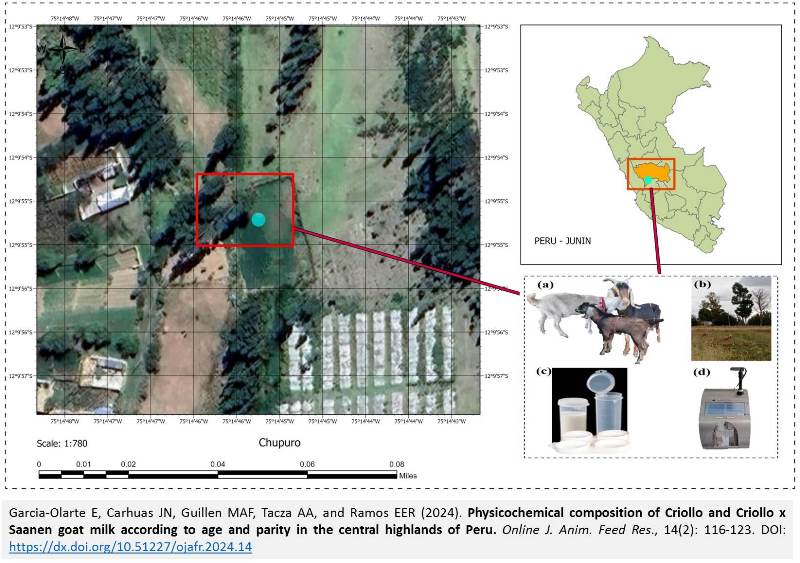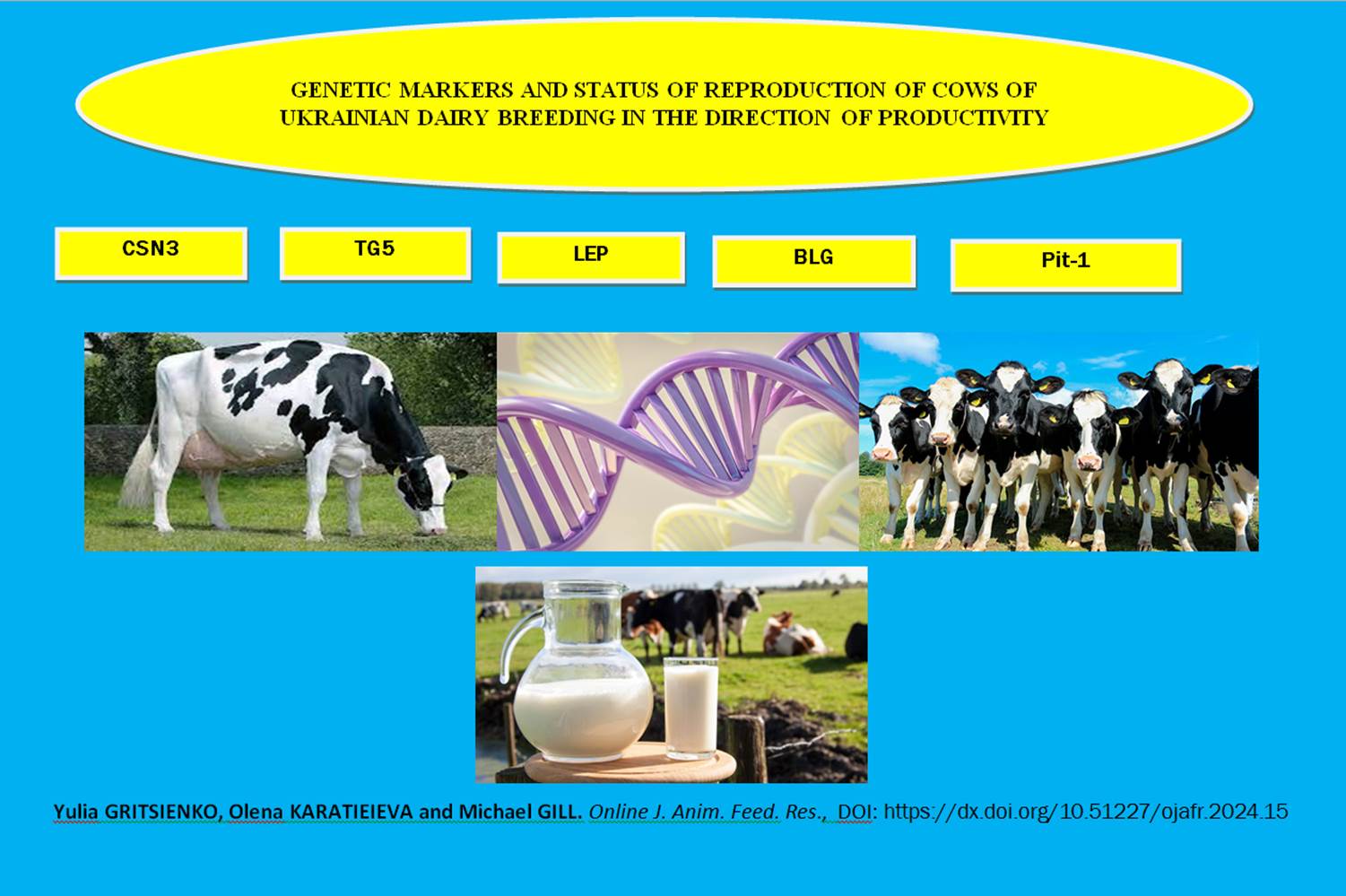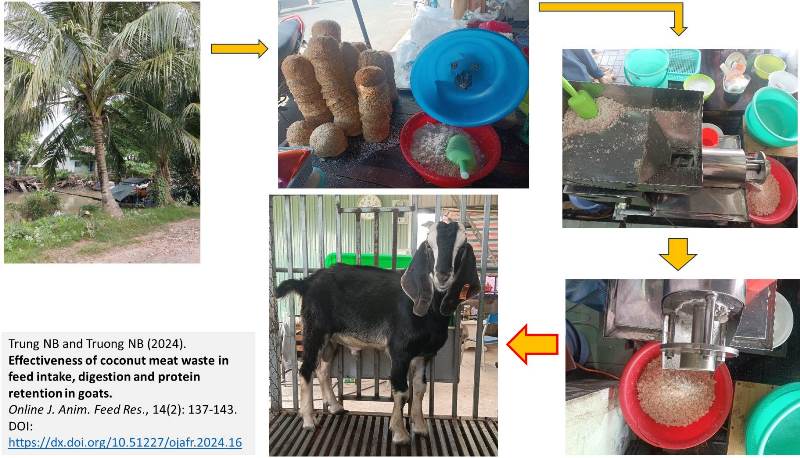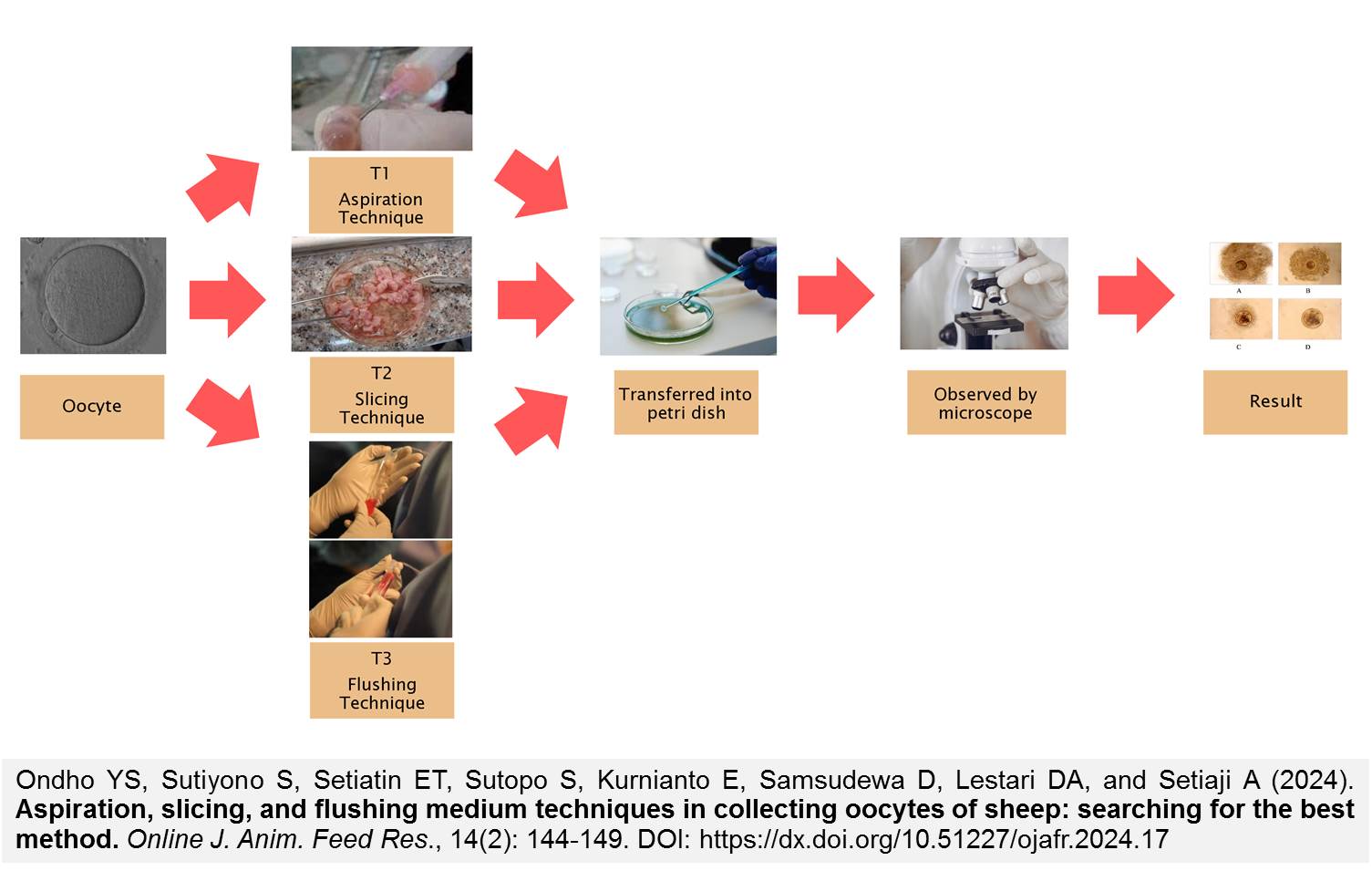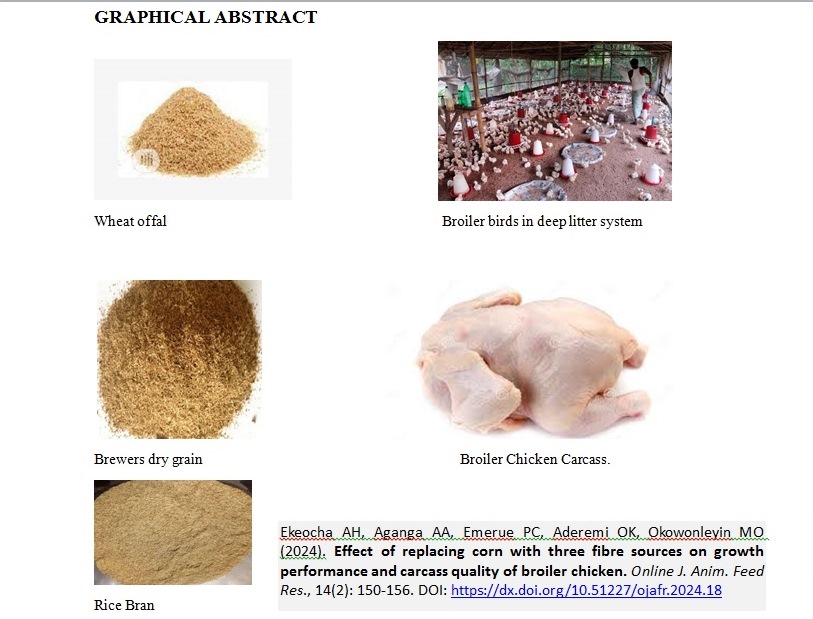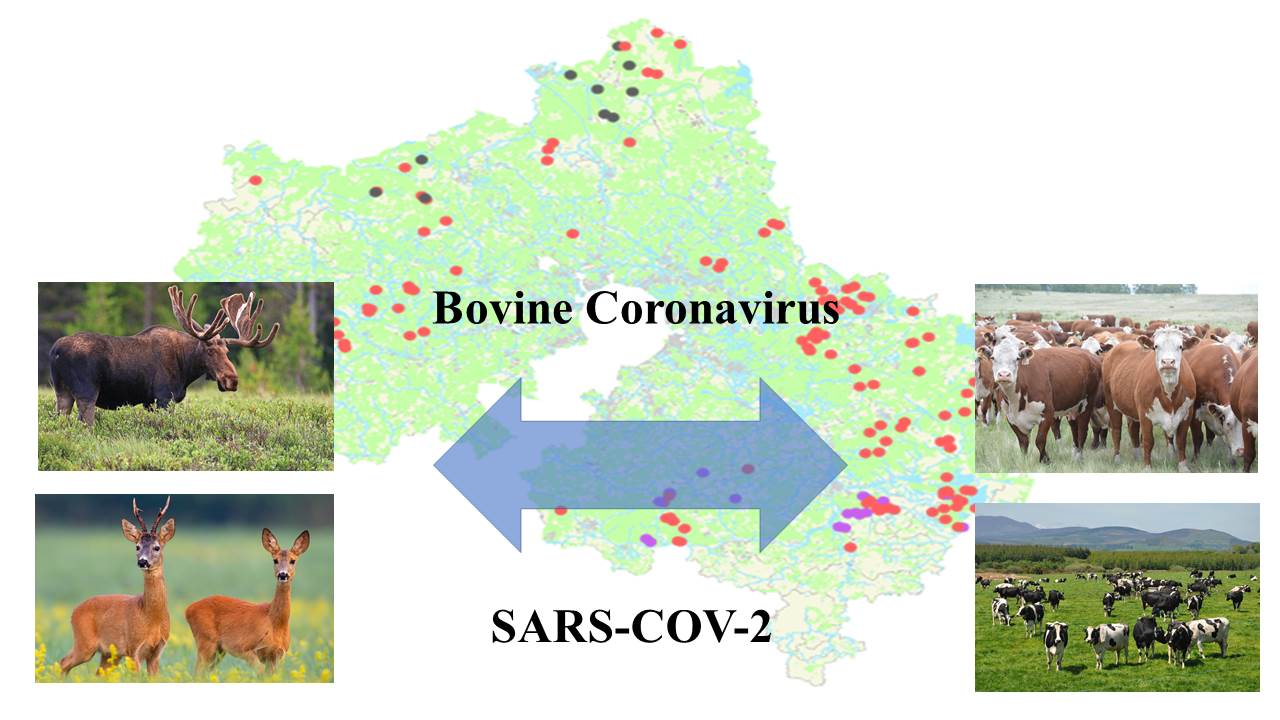Previous issue | Next issue | Archive
![]() Volume 14 (2); March 25, 2024 [Booklet] [EndNote XML for Agris]
Volume 14 (2); March 25, 2024 [Booklet] [EndNote XML for Agris]
Drinking magnetized water alters blood constituents, and structure of spleen and kidney in rabbits
El Sabry MI, Hassan A, Ebeid TA, Abou-Hashim F.
Online J. Anim. Feed Res., 14(2): 86-94, 2024; pii: S222877012400011-14
DOI: https://dx.doi.org/10.51227/ojafr.2024.11
Abstract
This study aimed to investigate the effect of magnetic field on physicochemical properties of water and evaluating the effects of the magnetized water (MW ) on the productive performance, liver enzymes, spleen and kidney structure of rabbits. Water samples were collected to determine pH and electrical conductivity (EC), and water structure was investigated by Transmission Electron Microscopy (TEM). Twenty-four weaned Rex rabbits, 21 d old, were allotted into two experimental groups: the first group was assigned as control, received regular tap water (TW), and the treated group, received MW, for 5 weeks. Productive traits were recorded weekly and at the end of the experiment, blood samples, spleen and kidney were collected for examinations. Results showed that pH and EC of MW were higher than those of TW. In addition, the arrangement MW cluster showed a unique alteration on the nano-scale. Growth performance indicators were similar in both experimental treatments, except FCR of the MW rabbits was better than that of the TW rabbits. The MW had no significant effect on plasma concentration of alanine aminotransferase (ALT), aspartate aminotransferase (AST), alkaline phosphatase (ALP), and creatinine in growing Rex rabbits received MW in comparison with those received regular TW. Spleen histological structure of rabbits of both groups was normal. However, the epithelial cells lining renal tubules of kidneys of rabbits in MW group appeared large with basophilic nuclei in comparison with TW group. Conclusively, magnetic field alters the physicochemical properties of water. The MW may consequently increase blood glucose level and spleen weight % and enhance kidney structure in growing rabbits. Moreover, more studies are still needed to know the benefits of providing the magnetized water to animals.
Keywords: Body weight; Liver; Magnetized water; Native water; Rabbits; Water quality.
[Full text-PDF] [Scopus] [Crossref Metadata] [Export from ePrints]
Enhancing growth and milk production of dairy buffaloes through home-grown forages and complete nutrient diet
Aquino DL, Palacpac EP, Molina AM, Lacanilao CC, Garcia NP, Del Barrio AN, Fujihara T.
Online J. Anim. Feed Res., 14(2): 95-106, 2024; pii: S222877012400012-14
DOI: https://dx.doi.org/10.51227/ojafr.2024.12
Abstract
This study aimed to boost the growth and milk production of dairy buffaloes while increasing farmers' income in Nueva Ecija, Philippines. The approach involved utilizing home-grown forages (HGF), such as napier grass and various legumes (Leucaena, Rensonii, and Indigofera), along with a complete nutrient diet (CND). For growing buffaloes, the CND consisted of 23 kg chopped napier grasses, 3 kg legumes, and 1 kg grower concentrates. For lactating buffaloes, the CND comprised 45 kg napier grass, 5 kg legumes, and 2 kg dairy concentrates. Sixty farmers, collectively raising 348 buffaloes, were trained in HGF production and CND preparation. In a 120-day feeding trial for growing buffaloes, a subset of 20 farmers participated, with 10 feeding their buffaloes CND and the other 10 serving as controls. The control group employed traditional feeding practices, involving tethered grazing on native pasture supplemented by cut-and-carry feeding of mixed native grasses. Implementing CND for growing buffaloes resulted in an average daily gain (ADG) of 0.46 kg or an improvement of 53.33% compared to the 0.30 kg ADG observed with traditional feeding. Moreover, CND implementation reduced feed costs, leading to a 98.54% increase in income per growing animal. In a separate feeding trial for lactating buffaloes, another subset of 20 farmers participated, with 10 feeding CND and the remaining 10 serving as controls (traditional feeding). Feeding CND to lactating buffaloes increased daily milk yield from 4.6 kg to 6.0 kg per animal, reflecting a 30.43% improvement compared to those fed with the control diet. This translated to a 41.31% increase in farmers’ income over a 180-day lactation period. The findings underline the effectiveness of HGF production and CND feeding in improving the performance of dairy buffaloes and increasing the financial well-being of farmers in Nueva Ecija, marking a significant advancement in sustainable dairy farming practices.
Keywords: Dairy buffaloes; Diet; Home-grown forages; Lactating period, Legumes.
[Full text-PDF] [Scopus] [Crossref Metadata] [Export from ePrints]
Chitosan oligosaccharides as dietary antioxidants in nutrition of broiler chickens: a review
Harahap RP, Sholikin MM, Sadarman.
Online J. Anim. Feed Res., 14(2): 107-115, 2024; pii: S222877012400013-14
DOI: https://dx.doi.org/10.51227/ojafr.2024.13
Abstract
Chitosan oligosaccharides (COS) have attracted considerable attention in poultry research due to their diverse biological activities and possible effects on the welfare and productivity of broiler chickens. A thorough examination of many studies indicates that the influence of COS on indices such as antioxidative functions, growth performance, immunological responses, and metabolic implications in broilers is significant. For example, specific dosage levels of COS have significantly enhanced antioxidant activity, regulation of cholesterol levels, and improved growth performance. The research findings have provided evidence for COS's antioxidative and anti-inflammatory properties and its capacity to mitigate the effects caused by stress. Nevertheless, the effectiveness of reactions might be influenced by the dosage and may demonstrate variances. Broiler chickens are suggested to consume dietary COS levels between 350 mg/kg and 500 mg/kg feed to obtain antioxidant and immunological advantages. Nevertheless, the most favorable results regarding growth and the ability to absorb nutrients are typically found when the intake ranges from 0.5 g/kg to 1.0 g/kg feed. For yellow-feather broilers experiencing heat stress, it is advisable to administer a dosage of 200 mg/kg feed of COS. However, it is essential to closely observe dosages exceeding 2.5 g/kg since they may significantly impair growth performance. The diverse research on using COS in broiler management has provided valuable insights into its intricate nature. This review has highlighted the potential benefits of COS in enhancing chicken health and nutrition. However, it has also underscored the need for additional research to optimize its effectiveness in broiler production fully. It can be concluded that dietary COS in broiler chickens in doses ranging from 200 mg to 1000 mg/kg feed has a positive effect on growth performance, antioxidative properties, regulation of lipid metabolism, ability to mitigate stress, impact on meat quality, and carcass traits, but exceeding 2.5 g/kg feed may significantly impair in growth performance in the broiler.
Keywords: Antioxidative, Anti-inflammatory, Broiler, Chitosan Oligosaccharides, Growth Performance, Meat Quality.
[Full text-PDF] [Scopus] [Crossref Metadata] [Export from ePrints]
Physicochemical composition of Criolla and Criolla x Saanen goat milk according to age and parity in the central highlands of Peru
Garcia-Olarte E, Carhuas JN, Guillen MAF, Tacza AA, and Ramos EER.
Online J. Anim. Feed Res., 14(2): 116-123, 2024; pii: S222877012400014-14
DOI: https://dx.doi.org/10.51227/ojafr.2024.14
Abstract
Present study aimed to analyze the physicochemical composition of goat milk based on the type of animal, age, and parity in Chupuro, Junin region in the country of Peru. A total of 24 goats were randomly selected, and divided into two groups: 12 native goats and 12 native goats crossed with Saanen. These groups (G1, G2, and G3) included three age categories (1.8, 2.5, and 3.2 years) and three parity levels (first, second, and third parity). The animals were monitored and fed considering their conversion and nutritional requirements. Before the morning milking, 100 ml of milk was extracted in sterile bottles, followed by agitation for 3 to 5 minutes, and the samples were transported using conservation and cooling techniques in a thermal box with ice cubes. These samples were analyzed in the special laboratory. Measurements of pH, acidity, density, lactose, total solids, fat, and protein were conducted using milk analyzer. The findings for the Criollo breed revealed a pH of 6.35 ± 0.31, a lactose concentration of 4.35%, total solids of 11.62 ± 1.31%, protein content of 4.12 ± 0.35%, and fat content of 3.40 ± 0.91%. In comparison, the Criollo x Saanen crossbreed exhibited a pH of 6.43 ± 0.13%, a lactose concentration of 4.45%, total solids of 12.63 ± 0.92%, protein content of 4.26 ± 0.28%, and fat content of 3.95 ± 0.69%. The results indicated that there were no significant differences in the types of milk from native goats and native goats crossed with Saanen. However, significant differences (P<0.05) were observed in density, lactose, total solids, fat, and protein between groups of different ages and parity levels. Crossbreeding with the Saanen breed is well received in the region, as it serves to improve milk production, with favorable percentages of fat, protein, lactose, and total solids.
Keywords: Milk quality, Native goats, Parity, Physicochemical composition, Saanen breed.
[Full text-PDF] [Scopus] [Crossref Metadata] [Export from ePrints]
Identification of some genetic markers as productive and reproductive traits in Ukrainian dairy cattle breeding
Gritsienko Y, Karatieieva O and Gill M
Online J. Anim. Feed Res., 14(2): 124-136, 2024; pii: S222877012400015-14
DOI: https://dx.doi.org/10.51227/ojafr.2024.15
Abstract
A Selection based on DNA markers is a breeding technique grounded in the genomic selection value of animals. The aim of the research is to study the genotypic profile of cows of different breeds in Ukrainian breeding in relation to the genes LEP, CSN3, TG5, BLG, and Pit-1 and to identify the probability of using them as markers for reproductive traits in cows. During the study, the Polymerase Chain Reaction-Restriction Fragment Length Polymorphism (PCR-RFLP) method was used to analyze the genes and determine their polymorphic characteristics. The obtained data indicated that the same gene variants have varying effects in the studied breeds due to their diverse influences on the genomic background. Specifically, the homozygous state of leptin genes (LEPCC) and pituitary-specific transcription factor (PIT-1BB) was observed to impact the reproductive characteristics of cows in the evaluated breeds. Meanwhile, for the genes casein (CSN3AB), thyroglobulin (TG5CT), and beta-lactoglobulin (BLGAВ), the heterozygous state of alleles was found to influence the key reproductive traits of dairy cattle of Holstein origin. The polymorphism of the genes CSN3, βLG, TG, PIT-1, and LEP indicated the presence of genetic potential for the reproductive function of cows and can be utilized as molecular markers in selective breeding, providing significant progress in improving not only the traits of dairy cattle productivity but also reproductive function. Therefore, in the implementation of selective breeding work, it is advisable to consider genotyping for the genes CSN3, βLG, TG, PIT-1, and LEP as an additional criterion for the selection of animals to enhance both their milk and reproductive characteristics.
Keywords: CSN3, Dairy cattle, Genetic potential, Marker genes, Polymorphism, Reproductive function.
[Full text-PDF] [Scopus] [Crossref Metadata] [Export from ePrints]
Effectiveness of coconut meat waste in feed intake, digestion and protein retention in goats
Trung NB and Truong NB.
Online J. Anim. Feed Res., 14(2): 137-143, 2024; pii: S222877012400016-14
DOI: https://dx.doi.org/10.51227/ojafr.2024.16
Abstract
The objective of the experiment was to determine the proportion of coconut meat waste on feed consumption, nutrient digestibility and nitrogen retention of goats. The experiment was conducted using a Latin square design on 4 male Bach Thao goat (16.2±2.93 kg). Treatments were 4 levels of coconut meat waste (CMW) at 0, 5, 10 and 15% in basal diet of rice distillers’ by-product, cabbage waste, Operculina turpethum vines, urea and premix. Results indicated that dry matter intake per body weight tended to increase from CMW0 to CMW5 treatment but it was gradually reduced from CMW5 to CMW10 and CMW5 treatments (3.34; 3.50; 3.46 and 3.28, respectively). The ME consumption was higher at supplemented treatments coconut meat waste compared to CMW0 treatment. The nutrient digestibility (%) was gradually increased from CMW0 to CMW15 treatment. Similarly, digestive nutrients tended to increase with increasing coconut meat waste in the diet. The nitrogen retention was numerically lower for the CMW5, CMW10 and CMW15 treatments compared to CMW0, while daily weight gain was not different among treatments. In conclusion, 10% coconut meat waste could be used as an additional source of dietary regimen in goats, without negative effects on animal fattening performance.
Keywords: Agricultural waste, Alternative feedstuff, Digestibility, Local feeds, Small ruminants.
[Full text-PDF] [Scopus] [Crossref Metadata] [Export from ePrints]
Aspiration, slicing, and flushing medium techniques in collecting oocytes of sheep: searching for the best method
Ondho YS, Sutiyono S, Setiatin ET, Sutopo S, Kurnianto E, Samsudewa D, Lestari DA, and Setiaji A.
Online J. Anim. Feed Res., 14(2): 144-149, 2024; pii: S222877012400017-14
DOI: https://dx.doi.org/10.51227/ojafr.2024.17
Abstract
The aim of this study was to compare the effect of the techniques of aspiration, slicing, and flushing medium in collecting oocytes on the quantity and quality of oocytes, the average time used for collecting oocytes per ovary, and the volume of the medium used. The material utilized was 274 ovaries from ewes aged 2.5 to 3.5 years and body weight ranging between 25 and 35 kg. This study used a Completely Randomized Design consists of 3 treatments of techniques were aspiration, slicing, and flushing medium. The parameters measured included the average quantity, quality, and weight of oocytes per ovary (right/left), the effect of the techniques of aspiration, slicing, and flushing medium on the quantity and quality of oocytes, and the efficiency of use of medium and time spent to collect oocytes by using aspiration, slicing, and flushing medium techniques. Data were analyzed by one-way analysis of variance. The results showed that the aspiration technique collected the highest percentage (P<0.01) of oocytes quality A (38.49%) compared to the slicing technique (17.93%), and the flushing medium technique (11.71%). In terms of time, the aspiration technique was the fastest (8-10 minutes) compared to the slicing technique (10-12 minutes), and flushing medium technique (13-15 minutes); meanwhile, the aspiration technique was the most efficient technique (1-2 ml) compared to slicing technique (3-5 ml) and flushing medium technique (6-10 ml). In conclusion, the aspiration technique is the best one for oocyte collection from sheep ovaries. This technique proves to be efficient in terms of quantity and quality of the oocytes collected, time to perform, and medium to use.
Keywords: Ewes, Ovaries, Oocytes, Reproductive techniques, Sheep breeding.
[Full text-PDF] [Scopus] [Crossref Metadata] [Export from ePrints]
Effect of replacing corn with three fibre sources on growth performance and carcass quality of broiler chicken
Ekeocha AH, Aganga AA, Emerue PC, Aderemi OK, Okowonleyin MO.
Online J. Anim. Feed Res., 14(2): 150-156, 2024; pii: S222877012400018-14
DOI: https://dx.doi.org/10.51227/ojafr.2024.18
Abstract
The experiment was carried out to evaluate the effect of replacing corn with three dietary fibre sources on the growth performance and carcass quality of broiler chicken. One hundred and forty four one-day old broiler chickens were used for the experiment. The birds were brooded for two weeks on commercial starter diet after which they were subjected to four experimental diets or treatments. The birds were randomly distributed into four treatments with three replicates, each replicate consisting of 12 birds. All birds in each treatment were fed with different diet and weighed at the end of every week. The experimental design used was a completely randomized design. The experimental treatments were designated as treatment T1, T2, T3, T4 while T1 was tagged as a control diet without any source of dietary fibre, T2 as a diet with wheat bran as a source of dietary fibre, T3 as a diet with rice bran as a source of dietary fibre, T4 as a diet with brewers dried grain (BDG) as a source of dietary fibre. There was no significant (p>0.05) difference in the initial weight of the birds across the treatments, but there was a significant (p<0.05) difference in the final weight and body weight gain of the birds where T2 had the highest body weight gain and T3 has the lowest body weight gain. This trend was also observed in the carcass. Based on the result of this experiment wheat bran can be used as a source of dietary fibre for better growth performance of broiler chicken at a low inclusion level.
Keywords: Broiler, Carcass, Corn, Dietary fibre, Growth performance.
[Full text-PDF] [Scopus] [Crossref Metadata] [Export from ePrints]
PCR-based study on viral pathogens circulation among cervids in the Moscow region
Yatsentyuk S, Krasnikova M, Dolinskaya K and Pchelnikov A.
Online J. Anim. Feed Res., 14(2): 157-164, 2024; pii: S222877012400019-14
DOI: https://dx.doi.org/10.51227/ojafr.2024.19
Abstract
A molecular survey of selected viruses in free-ranging cervids was conducted in 15 different districts of Moscow region. Samples were collected from 178 game animals including 144 moose (Alces alces), 19 roe deer (Capreolus capreolus) and 15 deer without species information. Nasal swabs and tissue samples including parts of the nasal septum, upper tracheal rings, lung, heart, liver, kidneys and pooled organ samples were tested using polymerase chain reaction (PCR). Samples were studied for pestiviruses, herpesviruses, coronaviruses, group A rotaviruses, adenoviruses, hepatitis e and parainfluenza type 3 virus. None of the samples were positive for Bovine Coronavirus and SARS-COV-2, hepatitis E virus and parainfluenza type 3 virus. PCR results were positive for bovine herpesviruses (5.05%), pestiviruses (0.56%), rotaviruses (1.68%). DNA of a new adenovirus, presumably causing a mild course of animal respiratory disease, was detected in samples of 6 animals (3.37%). In conclusion, the conducted studies have shown that game animals of the Moscow region can be a natural reservoir of cattle viruses, and this must be taken into account when planning and organizing measures for the control and eradication of such notifiable diseases as bovine viral diarrhoea and infectious bovine rhinotracheitis. Monitoring studies and general disease surveillance of wild animal populations provide additional information on the epidemiology of infectious diseases in the region and allow timely measures to be taken to protect wild animals, domestic animals and the public.
Keywords: Cattle, Deer, Epidemiology, PCR, Viral infection.
[Full text-PDF] [Scopus] [Crossref Metadata] [Export from ePrints]
Previous issue | Next issue | Archive
This work is licensed under a Creative Commons Attribution 4.0 International License (CC BY 4.0).![]()
| < Prev | Next > |
|---|


